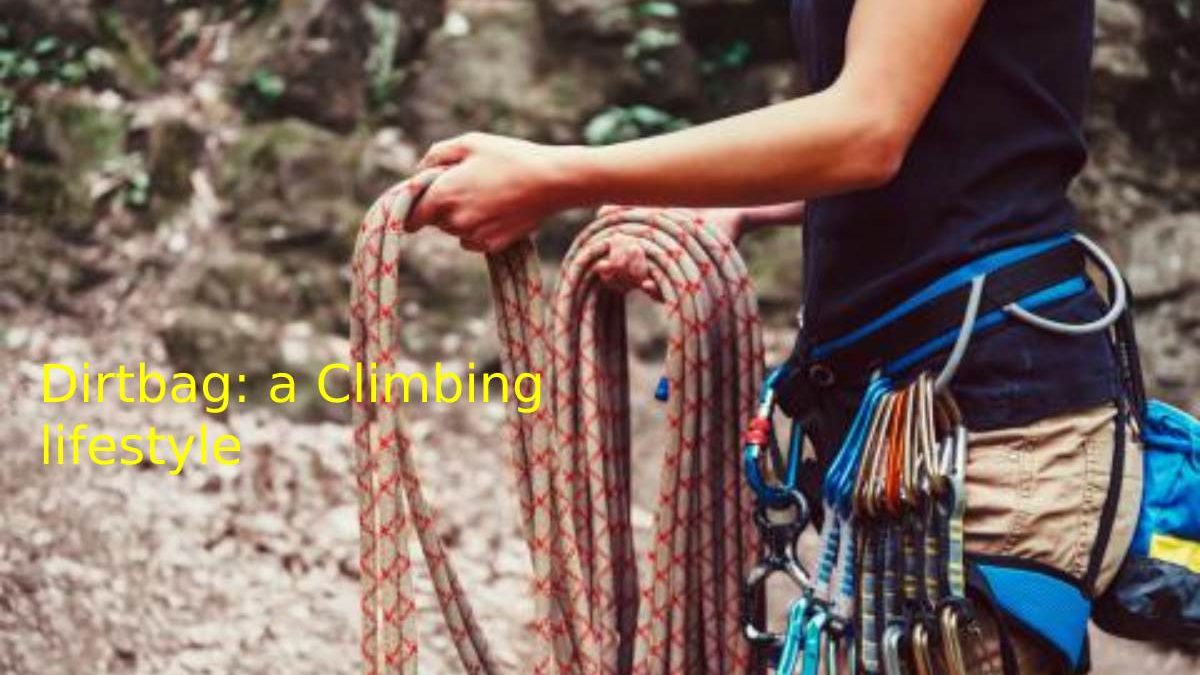Table of Contents
What is a Dirtbag Climber
Dirtbag There have stood significant advances in understanding the word junk, used correctly in some reputable media outlets. It is a step in the right direction for the mainstream media, which often struggles to cover our beloved sport, often inaccurately.
Many climbers are passionate about the dirtbag lifestyle (see Dirt Bag Climbers) who feel that the climbing culture saved their lives.
Actually, not just climbing, but also immersing yourself in nature and life close to the earth.
There are also cases where rock climbing has helped troubled, depressed and drug-addicted teenagers.
Ever since the invention of smartphones, climbing apps, and improved pick-up trucks, people have been quick to say, “Trash is dead.”
I would say Dirtbag evolve. Technology just made the adventurous life easier.
Luke Mohall on Being a Trash
A few seasons ago, Luke Mohall (editor of The Climbing Zine) published an article with the common thread of “representing the essence of climbing”.
For us, our role in the dirty movement is to do our part to show that the dirty lifestyle is still possible, not just that it’s still alive and thriving. Cedar Wright’s title “Is Dirtbagging Dead? ‘ was very smart because it drew attention.
He delivers his speech on the death of trash but then challenges the next generation: continue the trash lifestyle as previous generations have done.
I don’t want to question anything that Mr Wright wrote because he was right: climbing is growing and changing, and many young climbers don’t know about dirt bagging; however, he wanted to continue with some thoughts of his own.
Climbing is more than climbing. It was and always will be.
When one truly falls in love with rock climbing, it’s impossible to keep the love alive without a community. And to be trash, just living outside, in a bag, in the garbage, you have to be supported by a community.
Dirt Bagging is Not Dead
Yes, it has gotten more difficult in some places, particularly certain places like Yosemite and Joshua Tree, but it’s just not true that it is dead. On the contrary, garbage is alive, and for climbers, it is more important than ever to live like garbage.
However, as I write this, it seems silly to put these words together like I’m a cranky idiot talking about my glory days and how children should live now.
People will discover the importance of living a simple life and the rewards of such an existence.
Everything starts all over again, and the existence of garbage is something people take for granted.
If The Climbing Zine ever becomes a eulogy to the glory days, burn it to light your campfire. The golden age of rock climbing is always within reach if you know where to look.
However, there are valid reasons to defend the continued existence of garbage. Living like a garbage bag is at the heart of climbing culture.
Initially, the inspiration came from the Beatniks. His prose, written in the 1950s and early 1960s, fueled the Yosemite climbing revolution that still inspires us as a culture. His free-spirited, labyrinthine lifestyle also inspired the grimy originals.
The New Generation of Garbage Bags.
We started in the 1990s and have seen the sport grow exponentially.
Stricter restrictions on camping remain set in many places, and technology has taken some romance out of bin bags.
Climbing walls have also created a culture of their own. I started climbing in a gym. Luckily, I soon met a group of climbers who changed the course of my life forever.
At The Climbing Zine, we believe this generation needs to pass the torch on to the next.
By the time I got into my thirty-somethings, I knew my pure trash days were over. Climbers of my generation get married and have children.
Hence, the younger generation, destined to be stronger and more formidable than us, comes into play.
I have every faith that this generation will continue with the dirty move and find the magic that this lifestyle offers.
You will find places to climb with no cell signal, and you can camp for free for weeks.


